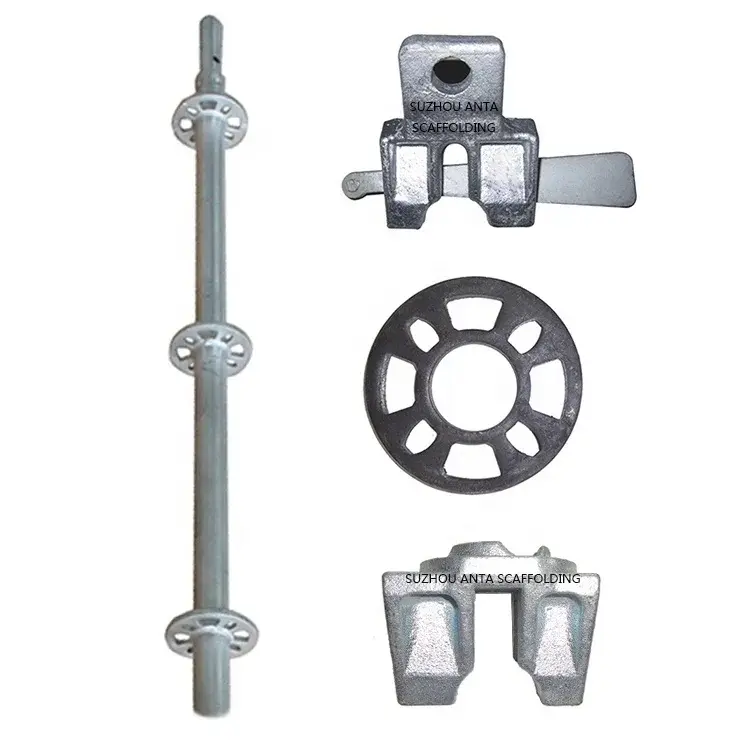Ringlock Node Point Design: How The 8-Hole Rosette Handles 40 KN Shear
Introducing the Ringlock Node Point Design
When it comes to construction projects, safety and reliability are of the utmost importance. Every component used must be able to withstand the demanding forces that come with building structures. One critical element in any construction project is the node point design, where different components come together to form a strong and stable structure. One of the most innovative node point designs is the 8-hole rosette, utilized in the Ringlock system. In this article, we will delve into how this unique design can handle 40 kN of shear force and why it is a game-changer in the construction industry.

The Ringlock System and Its Advantages
Before we dive into the specifics of the 8-hole rosette, let's first understand what the Ringlock system is and why it has become a popular choice in construction projects worldwide. The Ringlock system is a modular scaffold system that offers versatility, strength, and efficiency. It consists of vertical standards with rosettes at standard intervals, horizontal ledgers, diagonal braces, and various other components that can be easily connected and adjusted to suit different scaffold configurations.
One of the key advantages of the Ringlock system is its speed of assembly. The node points, such as the 8-hole rosette, allow for quick and easy connections, reducing the time and labor required to assemble and disassemble scaffolding. This not only saves time but also increases productivity on construction sites, making the Ringlock system a cost-effective solution for a wide range of projects.
The 8-Hole Rosette: A Closer Look
At the heart of the Ringlock system is the 8-hole rosette, a crucial component that enables multiple connections at a single node point. This unique design allows for up to eight horizontal and diagonal members to be connected to a single vertical standard, providing exceptional strength and stability to the scaffold structure.
The 8-hole rosette is precision-engineered to handle shear forces of up to 40 kN, making it one of the strongest node point designs in the industry. The strategic placement of the eight holes ensures that each connection point distributes the shear force evenly, minimizing stress concentration and maximizing the overall load-bearing capacity of the scaffold system.
How the 8-Hole Rosette Handles 40 kN Shear Force
To understand how the 8-hole rosette is able to handle such high shear forces, it is essential to look at the design and construction of this critical component. Each hole in the rosette is precisely positioned and shaped to accommodate specific sizes of horizontal and diagonal members, ensuring a snug and secure fit for each connection.
The geometry of the 8-hole rosette plays a significant role in its ability to handle shear forces. By distributing the load across eight connection points, the rosette effectively reduces the stress on each individual connection, preventing any one point from bearing the full brunt of the force. This design feature not only increases the overall strength of the node point but also enhances the durability and longevity of the scaffold system.
Moreover, the 8-hole rosette is made from high-quality steel, further enhancing its load-bearing capacity and resistance to deformation. The material properties of the rosette are carefully selected to withstand the rigors of construction work, ensuring that it maintains its structural integrity even under the most demanding conditions.
The Importance of Shear Force in Construction
Shear force is a critical consideration in construction, especially in structures where lateral loads or wind forces are prevalent. Shear force occurs when two parts of a structure slide past each other in opposite directions, exerting pressure on the connections between them. Without proper reinforcement, shear forces can cause components to fail, leading to structural instability and potential safety hazards.
In scaffolding systems, shear force is particularly important as the structure is subject to various external forces and loads during construction. The node points, such as the 8-hole rosette, play a crucial role in distributing these forces evenly and ensuring that the scaffold remains sturdy and secure. By effectively handling shear forces, the 8-hole rosette enhances the overall safety and reliability of the scaffold system, giving construction workers peace of mind while working at heights.
The Future of Node Point Design in Construction
As construction projects become more complex and demanding, the need for innovative and robust node point designs has never been greater. The 8-hole rosette in the Ringlock system sets a new standard for strength, stability, and efficiency in scaffold construction. Its ability to handle 40 kN of shear force is a testament to the advanced engineering and precision manufacturing that goes into designing this critical component.
Moving forward, we can expect to see further advancements in node point design, with a focus on maximizing load-bearing capacity, minimizing stress concentrations, and optimizing structural performance. The 8-hole rosette is just the beginning of what is possible in scaffold construction, and as technology continues to evolve, we can look forward to even stronger, safer, and more versatile node points that will shape the future of construction projects around the world.

